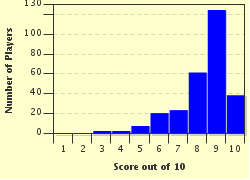Quiz Answer Key and Fun Facts
1. If the popular song is your thing
Ol' Blue Eyes from Hoboken could sing
In the night, doo-be-dooing
Oscar won; Mia wooing
He could read out the phone book and swing
Which legendary entertainer?
2. He's most famous for only one book
He wrote others that folks overlook
Gave the world a new word
Funny, serious, absurd
And a new way at warfare to look
Which author gave us a word to describe the bureaucracy of warfare and the immortal characters Milo Minderbinder and Major Major Major Major?
3. She was Henry the Eighth's number four
Whom he chose when a portrait he saw
But she wasn't that neat
He divorced her tout de suite
Over time, though, he cherished her more
Which woman did Henry VIII supposedly call a "Flanders Mare"?
4. He's a business colossus of course
Mass production a real driving force
Gave the people new freedom
It's said if he'd asked 'em
He'd have produced a speedier horse
Who was the pioneer of the assembly line who made automobiles affordable?
5. After Margaret Thatcher resigned
Her successor, a grey man, opined
"When your back's to the wall
Turn around and walk tall!"
The cone hotline? Yes that springs to mind!
Who was the UK Prime Minister between Thatcher and Blair?
6. If he'd stuck to exploring he'd be
Legendary for eternity
But he turned from things polar
And became a controller
Taking care of displaced refugees
Who was the Norwegian who went from polar exploration to winning a Nobel Prize for his work helping displaced persons?
7. Ireland's king of the football display
Was inclined very often to say
"My cash went on cars
Fast women and bars
But the rest I just squandered away"
Who was Northern Ireland's great footballer for Manchester United - sometimes dubbed "El Beatle"?
8. An Italian artist once fled
Off from Rome where he left someone dead
Between all his fights
His painting delights
Others followed him after he led
Who was the influential Italian painter known for his realistic style and use of chiaroscuro?
9. A Scottish researcher found out
That some bugs he'd left lying about
When he went on vacation
Suffered disintegration
Caused by mould - he's a hero no doubt!
Who was the great Scottish scientist whose mouldy discovery saved millions of lives?
10. There once was a fellow named Jones
Sang of Starman and Spiders and Gnomes
Was a bit of a Kook
And a real Thin White Duke
He inspired generations of clones
Who was the image changing pop superstar who died in 2016?
Source: Author
Upstart3
This quiz was reviewed by FunTrivia editor
bloomsby before going online.
Any errors found in FunTrivia content are routinely corrected through our feedback system.


